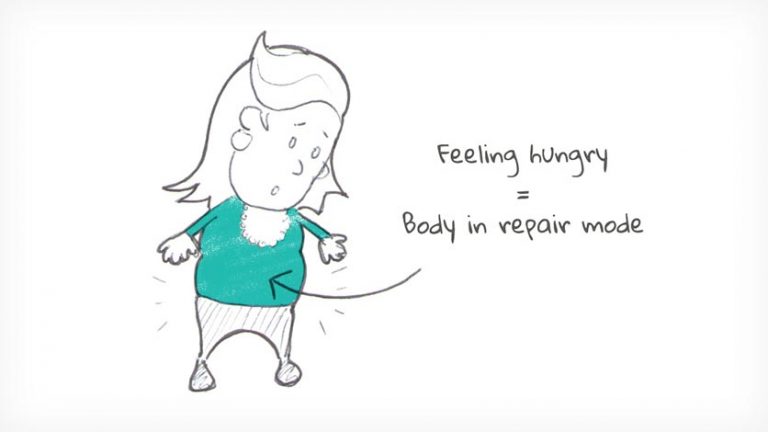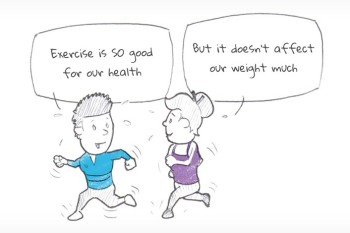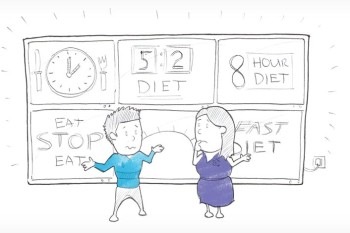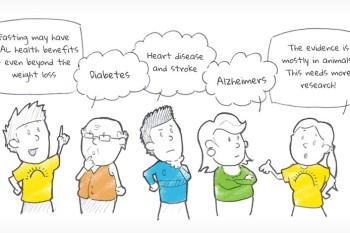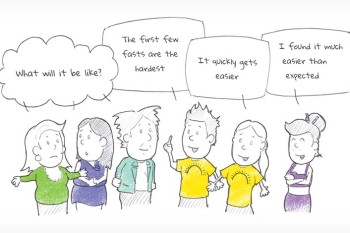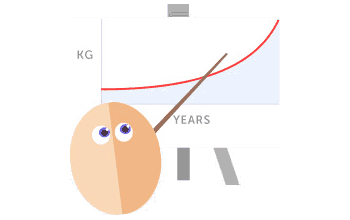About 4 or 5 hours after we finish eating, our insulin levels begin to fall and this triggers a series of hormonal changes as we start to enter the fasting state. At first the body uses its stores of glucose (glycogen) for energy, but as these are depleted, the body starts to turn to fat for energy.
Learn more about fasting and fat burning
The switch from glucose to fat as the main fuel is key for the health benefits of fasting. It takes around 12 hours after a meal for the body to begin to derive a significant amount of energy from fat, but this varies enormously and depends on:
-
Whether you are ‘fat adapted’ or ‘metabolically flexible’ (i.e. your body has adapted to switching on fat burning)
-
How much glycogen you have stored (this will depend on how much carbohydrate you have eaten, and the capacity of your liver and muscle to store glycogen)
-
How quickly you deplete your glycogen stores (this will depend on how active you are during the fasting period)
Once your insulin levels have fallen sufficiently to allow fat to start to be released from your fat stores and your body to burn fat you will begin to reap some health benefits.
Learn about the health benefits of fasting
How our bodies change during fasting
Dramatic changes occur in our bodies as the fasting time progresses:
-
Blood glucose levels fall resulting in a decrease in insulin. Our cells detect the decrease in blood glucose and switch from being in a growth phase to a repair phase.
-
Blood glucose levels are prevented from falling too low by the liver which increases its glucose production.
-
As insulin levels decrease the cells become more sensitive to its effects, resulting in a decrease in insulin resistance and an improvement in their glucose tolerance test results.1
-
The decreases in insulin and blood glucose are particularly large in people with diabetes.2
-
Glucagon secretion increases encouraging fat burning.
-
The greatest changes in insulin and fat burning seems to happen between 18 and 24 hours of fasting.3
-
As fasting progresses, the liver starts to produce ketones from fats to provide fuel. As the concentration of ketones rises in the blood, the brain begins to take up the ketones from the blood for energy.
-
Leptin levels start to fall, reaching their greatest decline after about 36 hours.4
-
Thyroid hormone activity increases at first and then after around 24–36 hours starts to decrease, this is accompanied by an initial increase in metabolic rate followed by a gradual decrease.5
-
Total cholesterol and high density lipoprotein (HDL) levels rise during the fast as a reflection of the need to transport fats around the body to supply fuel.6
-
Growth hormone production starts to increase, encouraging fat burning and protecting the muscles from being broken down for glucose.7
-
Insulin-like growth factor (IGF-1) levels start to fall.7
-
Changes in the brain produce chemicals that enhance nerve growth and bring about a sense of well-being.8,9
These changes may not happen as quickly or to the same extent in people who are obese and/or have metabolic inflexibility compared with lean people or those who are used to fasting. It may take several fasts before the body is able to instigate these changes smoothly.
As the body becomes more adapted to fasting, many health benefits are imparted:
-
Reduction in body fat, particularly fat stored around the internal organs (visceral or abdominal fat)
-
Reduction in insulin resistance, resulting in a decreased risk of diabetes and heart disease
-
Reduction in inflammation, aiding inflammatory conditions such as asthma
-
Inhibition of cell growth (particularly relevant to the uncontrolled growth seen in cancer cells)
Learn more about the health benefits of fasting
As well as the physical changes that happen when we fast, there are many psychological benefits from fasting.

